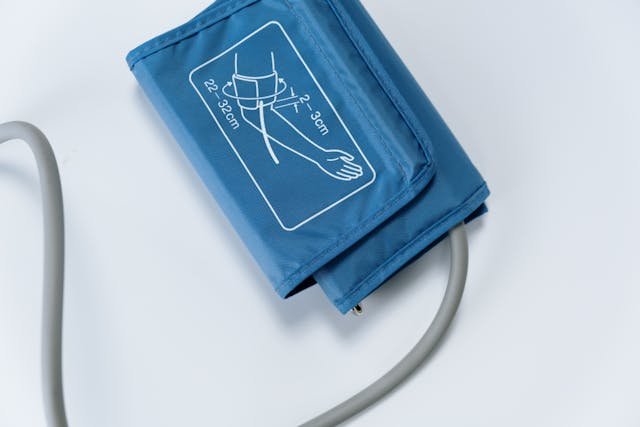Standing should feel natural. But for many seniors using a prosthetic leg, it can sometimes bring moments of dizziness, light-headedness, or even a sudden drop in blood pressure. These feelings can make standing up or staying upright feel uneasy and unpredictable.
Low blood pressure—often called hypotension—can make the world spin for a few seconds when you rise from a chair or bed. Combine that with the effort of balancing on a prosthetic leg, and even simple actions can feel like challenges.
The good news? With the right techniques and awareness, you can manage dizziness safely and regain confidence in your movements. At RoboBionics, we’ve worked closely with hundreds of prosthetic users across India, helping them build balance, strength, and safe standing habits.
This article will walk you through gentle, practical strategies to manage dizziness and low blood pressure while using a prosthetic leg. You’ll learn why these sensations happen, how to prevent them, and what daily habits can help you stand strong without fear.
Understanding Dizziness and Low Blood Pressure
What Happens When You Feel Dizzy
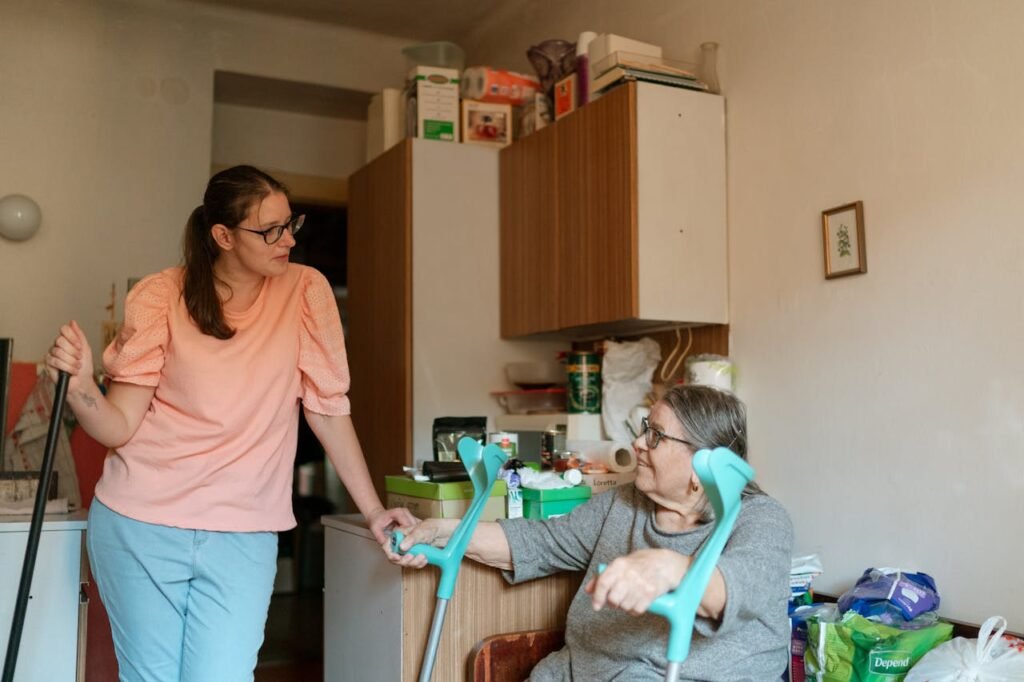
Dizziness is a light-headed or unsteady feeling that can appear suddenly when you move from sitting to standing. It may last only a few seconds, but it can make balance difficult—especially if you’re using a prosthetic leg.
For seniors, this happens often because the body takes a little longer to adjust blood flow when changing position. Blood may pool briefly in your lower limbs before your heart and vessels react to push it back up to your brain.
That brief delay is what causes dizziness or blurred vision. When you’re wearing a prosthesis, that extra second of imbalance can feel more noticeable.
Understanding Low Blood Pressure
Low blood pressure, or hypotension, means your heart isn’t pushing enough blood to your brain and muscles at the right speed. It can happen when you stand too quickly, after a meal, during dehydration, or when taking certain medications.
The medical term for this is orthostatic hypotension—“orthostatic” meaning “upright.” It simply means your blood pressure drops as your body changes position.
This is common among seniors and can make the first few moments of standing or walking tricky. Knowing why it happens helps you take steps to prevent it safely.
Why Prosthetic Users Feel It More
Using a prosthetic leg changes how blood and pressure move in your body. When you stand, your leg muscles and prosthesis work together to stabilize you. But since the prosthetic limb doesn’t have natural muscle pumps, blood may pool more easily in the remaining limb.
This slows your body’s ability to send blood back to your heart and brain, causing light-headedness.
Your posture and movement pattern also affect balance. If you tend to lean or stand unevenly, it takes your body a moment longer to adjust pressure through your prosthetic leg.
Recognizing the Warning Signs
Before dizziness fully hits, the body usually gives small hints. You may feel your heart race slightly, your vision blur, or your legs weaken. Sometimes you’ll feel warmth rising to your face or ears.
Recognizing these early signs helps you act before the dizziness becomes serious.
If you catch it early—by sitting, holding onto support, or breathing deeply—you can prevent a fall or sudden imbalance.
Preparing the Body Before Standing
Rise Slowly and Gently
One of the simplest yet most effective strategies is taking your time. When you move from lying down to sitting, pause for a few seconds before standing.
This small pause allows your heart and blood vessels to catch up, restoring normal blood flow to your brain.
Once seated, plant your sound foot firmly on the floor and ensure your prosthetic leg is properly positioned. Then, as you rise, use slow, steady motion instead of sudden effort.
The goal is to move with control, not speed.
Activate Your Muscles Before You Stand
Before standing, lightly contract the muscles in your thighs, calves, and abdomen. Squeeze and release a few times while seated.
This gentle action helps pump blood upward, preventing the sudden pressure drop that causes dizziness.
Even prosthetic users can benefit—contracting muscles in the sound leg and residual limb helps the whole system stabilize before standing.
A few seconds of muscle activation can make a big difference in how steady you feel.
Adjust Your Breathing
Breathing deeply before standing helps oxygenate your body and calm your nervous system.
Take two or three slow breaths while sitting, inhaling through your nose and exhaling through your mouth.
This simple rhythm slows your heartbeat slightly, keeping your blood pressure steady. It also prepares your mind for balance, which helps you move more mindfully once upright.
Hydration and Timing Matter
Dehydration is one of the most common triggers of low blood pressure. Seniors often drink less water without realizing how it affects circulation.
Try to sip water regularly throughout the day instead of drinking large amounts at once. When you wake up, have a few sips before getting out of bed—this helps your blood pressure rise gently.
If dizziness often happens in the morning, give yourself extra time before standing. Sit at the edge of the bed, move your legs, breathe, and let your body fully wake up.
Support Makes Standing Safer
Keep a stable object nearby when you rise—like a wall, chair, or walker. Avoid pulling on light furniture or objects that can move.
If your prosthesis has a knee lock or adjustable ankle, make sure it’s secure before shifting weight.
Using one or both hands for balance is not a sign of weakness—it’s smart safety. Over time, your confidence will grow, and you’ll need less support.
Standing Steadily with a Prosthetic Leg
Balance Begins with Posture
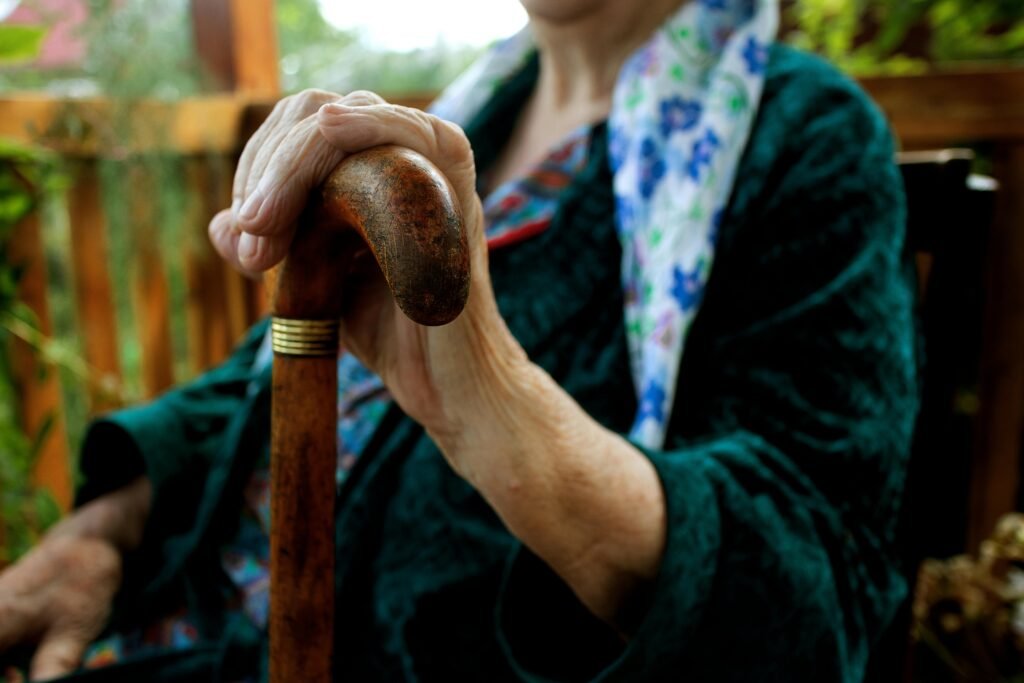
When you first stand, take a moment to align your posture. Keep your head upright, shoulders relaxed, and weight evenly distributed between both legs.
Leaning too much on your sound leg can throw off your center of gravity and increase strain. Instead, find a comfortable middle ground where your prosthesis supports part of your weight naturally.
Your body will start recognizing this balanced stance as normal, making it easier to stand for longer periods without strain or wobble.
Engaging the Core for Stability
Your core muscles—around your abdomen and back—act as your body’s stabilizers. When you gently tighten them, your spine stays upright, and your balance improves instantly.
While standing, imagine someone lightly pulling a string upward from your chest. This visualization naturally engages your core without effort.
It also keeps your breathing open and your shoulders straight, reducing fatigue while you stand.
Using Micro-Movements for Circulation
Standing completely still can sometimes make blood pool in your legs, especially for seniors. To avoid this, use small, slow movements.
Shift your weight slightly from one foot to the other every few seconds. You can also bend your knees a little or lift your prosthetic heel slightly off the ground.
These micro-movements keep blood flowing and prevent the dizziness that comes from prolonged stillness.
Adjusting to Your Environment
Lighting, temperature, and flooring all influence balance. Bright sunlight, glare, or dim light can make you feel disoriented.
Before standing, look around and make sure your surroundings are clear and steady. Avoid standing near moving objects like fans or curtains that can confuse your visual balance.
If the floor is slippery, use a mat or wear shoes with good grip to prevent accidental slips when your prosthetic foot first bears weight.
Using Support Intelligently
If you use a cane or walker, keep it close and positioned correctly. The cane should be on the opposite side of your prosthetic leg, helping distribute weight evenly.
When using railings or handles, place your sound leg slightly ahead and your prosthetic foot back until you feel steady.
Support should guide your movement, not carry your weight. Light, balanced contact gives both stability and independence.
Managing Dizziness During Standing
Recognizing the First Second
The first few seconds after standing are when dizziness is most likely to strike. This is when blood pressure is adjusting and your brain is catching up.
Stay still for a brief moment before walking. Let your body adapt to the new position.
If you feel light-headed, place one hand on a stable surface and breathe slowly until the sensation passes.
Focusing Your Vision
Looking downward or moving your eyes too quickly can worsen dizziness. Instead, focus on one fixed point straight ahead as you stand.
This visual focus helps your brain stabilize your sense of balance. Once you feel steady, slowly shift your gaze around to orient yourself.
If dizziness persists, close your eyes for a second and take a deep breath before reopening them. This resets your visual and sensory balance.
Breathing Through the Episode
Holding your breath can make dizziness worse. When you feel unsteady, exhale gently and inhale slowly through your nose.
This calms your nervous system and helps your blood pressure regulate faster.
Deep, rhythmic breathing is one of the most powerful tools for managing dizziness safely—it restores both balance and calm.
Sitting Back Safely if Needed
If the dizziness doesn’t fade within a few seconds, it’s safer to sit back down. Move slowly and use your hands or support to guide you.
Never force yourself to stay upright if you feel faint or disoriented. Taking a brief rest protects you from falls and helps your body recover faster.
Once seated, take slow breaths, keep your head level, and sip some water if available. After a few minutes, you can try standing again more gradually.
When to Seek Medical Help
If dizziness happens frequently or lasts longer than a few minutes, it’s important to consult a doctor.
Sometimes medications, dehydration, or heart conditions can cause repeated low blood pressure episodes. Adjustments in medication or diet can often solve the issue.
Your prosthetist can also check whether your alignment or socket pressure contributes to imbalance when standing.
Safe Movement Training
Taking the First Step
After standing, the next challenge is moving without losing balance. The key is not rushing your first step. Let your body settle before shifting weight forward.
Start by gently transferring weight to your sound leg. Then, when ready, move your prosthetic foot forward slowly and with intention.
Keep your gaze straight ahead, not down at your feet. Looking down makes balance harder because your neck and spine tilt forward. Keeping your head level helps your body align properly.
Using Controlled Transitions
Whether moving from sitting to standing or standing to walking, transitions should always be gradual. Quick movements confuse your body and can trigger dizziness.
When moving between positions, use your hands to assist. Push off from sturdy surfaces like armrests or railings instead of pulling on unstable furniture.
Once upright, pause for two to three seconds. Feel your feet grounded and balanced before taking your next step.
This small pause allows your body to reset and your blood pressure to stabilize naturally.
Balance Exercises You Can Practice
Gentle balance exercises help train your body to stand more steadily. These don’t need to be strenuous.
While holding onto a chair or counter, try shifting your weight from one leg to the other. Feel the pressure move evenly between your sound leg and prosthetic leg.
If you’re confident, practice small side-to-side steps or slow knee bends while holding support. These movements strengthen your hips, thighs, and core—all crucial for balance.
Consistency matters more than intensity. Practicing a few minutes daily builds long-term control and confidence.
The Role of Core Strength
Your core muscles stabilize every movement. Strengthening them helps you manage both balance and low blood pressure.
When your core is active, your body reacts faster to sudden changes in position, reducing dizziness and improving steadiness.
Simple seated exercises like tightening your abdomen for five seconds and then relaxing help tone your muscles without strain.
A stronger core means a more confident, upright stance and less effort when standing or walking.
Practicing with a Physiotherapist
A physiotherapist who understands prosthetic mobility can tailor safe standing and walking techniques for your needs.
They can help you identify which muscles need strengthening, how to improve posture, and how to manage transitions smoothly.
Professional guidance ensures your training is both safe and effective, helping you move without fear of dizziness or imbalance.
Diet and Hydration for Stable Blood Pressure
The Power of Proper Hydration
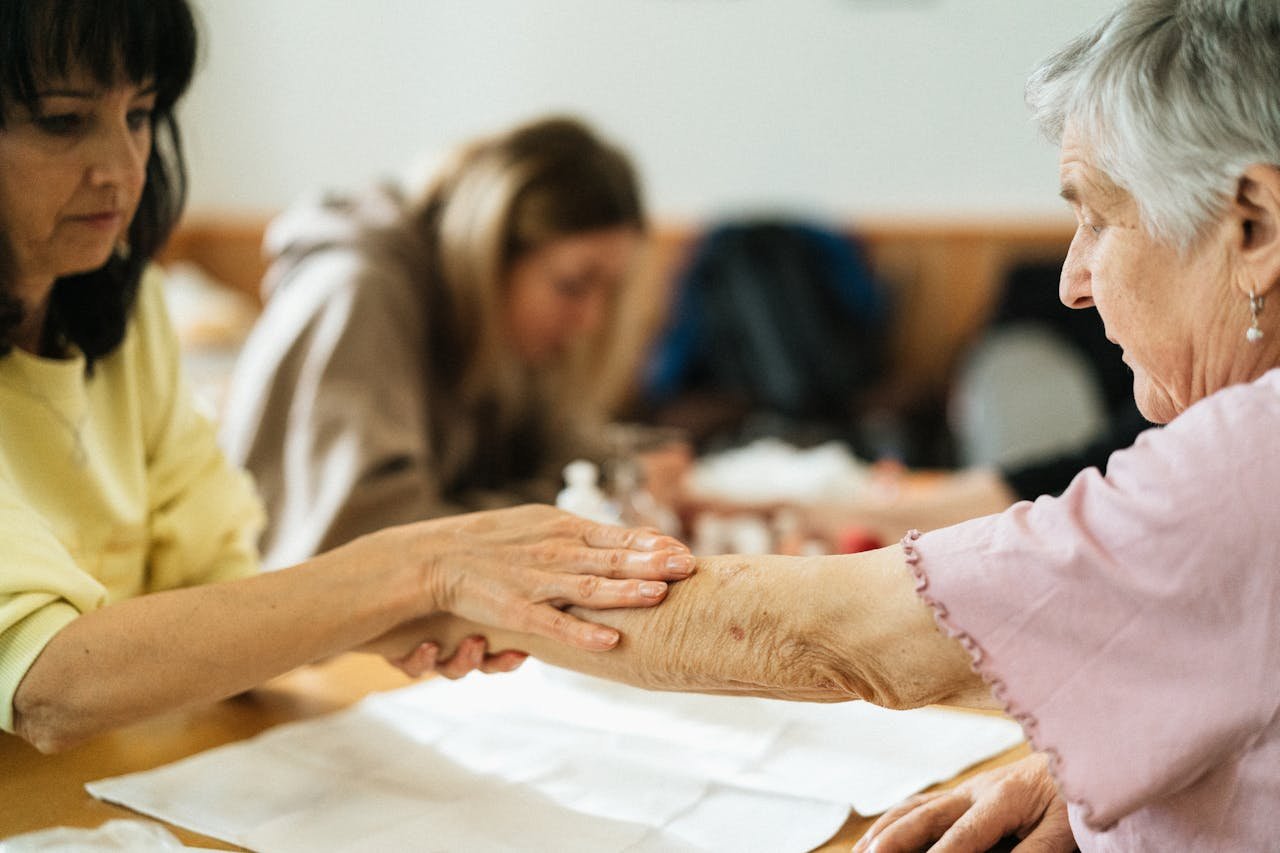
Water keeps your blood circulating efficiently. When dehydrated, your blood volume drops, which can cause sudden dips in pressure.
Seniors often drink less water because they don’t feel as thirsty—but your body still needs it. Try sipping small amounts throughout the day rather than drinking large quantities at once.
Adding water-rich foods like fruits, soups, and vegetables also helps. Think of hydration as part of your daily routine, not an afterthought.
The Importance of Salt in Moderation
For those with chronically low blood pressure, a small increase in salt intake can sometimes help retain fluids and stabilize circulation.
However, this must be done with medical guidance—especially if you have heart or kidney concerns.
Instead of adding more salt directly, focus on balanced meals with natural sodium sources, such as lightly salted lentils or soups.
Your doctor can recommend the right level for your health.
Nutrients That Support Circulation
Certain nutrients naturally help maintain healthy blood pressure. Potassium, found in bananas and oranges, balances fluid levels in the body.
Iron and vitamin B12, found in leafy greens and dairy, help your blood carry oxygen efficiently.
Including nuts, whole grains, and lean proteins gives your body steady energy throughout the day—preventing sudden drops in blood pressure caused by fatigue or hunger.
Eating Smaller, Balanced Meals
Large meals can pull blood toward your digestive system, causing a temporary drop in blood pressure.
Instead, eat smaller, well-spaced meals with a mix of protein, fiber, and healthy fats. Avoid heavy or sugary foods that can make you sluggish afterward.
After eating, sit upright for a few minutes before standing to prevent post-meal dizziness. Your body needs time to redirect blood flow evenly again.
Limiting Caffeine and Alcohol
While caffeine can temporarily raise blood pressure, it often leads to dehydration later. Alcohol has the same effect—it relaxes your blood vessels and lowers pressure.
If you enjoy tea or coffee, keep it moderate and follow up with water. For alcohol, occasional light intake is fine if your doctor approves, but avoid drinking on an empty stomach or before standing activities.
The more stable your hydration and nutrition, the easier it is to stand and move without dizziness.
Long-Term Balance Building
Practicing Patience
Building balance is a process, especially when adapting to a prosthetic leg. Each week brings small improvements that might not be visible immediately but matter deeply.
At first, even a few seconds of standing without dizziness is progress. Celebrate those small moments. They’re the foundation for long-term steadiness.
Patience allows your body to adapt gradually and safely.
Building Confidence Through Repetition
Confidence grows from repetition. The more you practice standing and walking calmly, the less your body reacts with fear or hesitation.
Try repeating safe transitions—sit, breathe, stand, and pause—throughout the day. Each repetition strengthens both muscles and memory.
Your brain learns that standing isn’t a threat, helping reduce stress-related dizziness.
Improving Circulation Through Movement
Simple daily movements help train your heart and vessels to respond faster. Gentle walking, slow stretching, or light chair exercises keep blood flowing smoothly.
Avoid long periods of sitting still. Every hour, stand up slowly, move your arms, and take a few steps.
Movement keeps your blood pressure consistent and prevents sudden drops when you finally rise.
Using Vision and Touch to Anchor Balance
Your eyes and sense of touch are major balance tools. When standing, focus your eyes on a fixed point ahead of you.
You can also lightly touch a wall or chair for grounding—this connection instantly helps your brain stabilize your body’s position.
Over time, your body learns to find equilibrium automatically, even when you’re not consciously trying.
Reassessing Your Prosthetic Fit
A prosthesis that fits perfectly supports your natural alignment. But if it’s loose, too tight, or misaligned, it can strain your muscles and worsen dizziness.
As your body changes, even slightly, your prosthetist can adjust your socket or components for better comfort and support.
Regular check-ups prevent imbalance from starting at the root.
Emotional Confidence and Safety
The Fear of Falling
Fear of falling is common among seniors, especially those who’ve felt dizzy before. But fear itself can cause tension, making balance harder.
Instead of focusing on “not falling,” focus on “standing safely.” This shift encourages calm confidence instead of anxiety.
Trust your support system—whether that’s a cane, a loved one nearby, or your prosthesis itself. Every bit of help builds security.
Staying Calm During Dizziness
Panic can make dizziness worse. If you feel it coming, breathe slowly and remind yourself it will pass in seconds.
Find a steady object to hold, lower your gaze slightly, and let your body settle naturally.
Calm breathing keeps your nerves relaxed and helps your blood pressure rise smoothly again.
Surrounding Yourself with Support
You don’t have to manage these challenges alone. Sharing your experiences with others—family, therapists, or fellow prosthetic users—brings reassurance and tips you might not think of.
Support groups, both online and in person, can teach practical advice from people who’ve lived through similar moments.
Feeling supported helps reduce emotional stress, which in turn reduces dizziness triggers.
Tracking Your Progress
Keeping a small notebook of when and how dizziness happens can help identify patterns.
You might notice it occurs more in the morning, after certain meals, or when standing quickly.
Understanding these patterns allows you to adjust routines and prevent future episodes. Over time, you’ll see fewer notes in your journal—and more confidence in your days.
Accepting the Body’s Rhythm
Every body has its rhythm, and some days will simply feel steadier than others. The goal is not perfection but consistency.
Learning your body’s signals, respecting its pace, and giving it time to adapt turns every small success into lasting stability.
You’ll soon realize that standing safely isn’t just about balance—it’s about harmony between your body and your prosthesis.
The RoboBionics Promise of Safe Mobility
Supporting Seniors Every Step of the Way
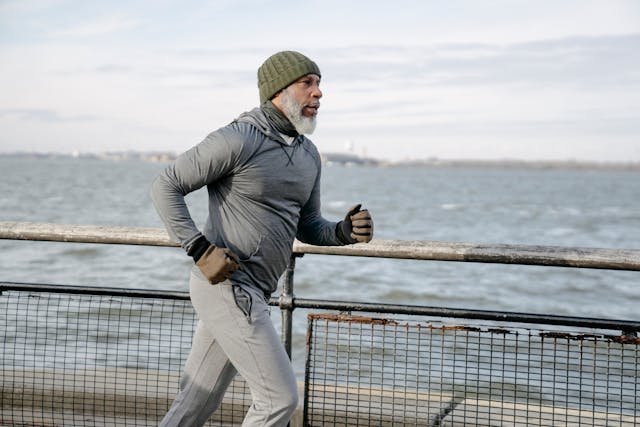
At RoboBionics, we understand that real independence comes from both movement and comfort. Our prosthetics are designed for everyday ease, helping you stand tall and move confidently.
Each design is crafted with care—lightweight, balanced, and responsive to your natural motion. Our goal is not just technology, but human comfort.
Personalized Care and Guidance
We believe every prosthetic journey is unique. That’s why our team offers customized fittings and ongoing guidance for seniors learning to manage low blood pressure and balance challenges.
From alignment checks to movement training support, we walk with you every step—ensuring every moment on your feet feels steady and safe.
Building Confidence Through Innovation
Our advanced prosthetic systems adapt naturally to your movements, reducing strain and improving balance. Combined with mindful standing techniques, they help prevent dizziness while restoring ease to daily life.
Because true innovation isn’t about machines—it’s about empowering people.
A Gentle Step Toward Strength
Standing tall after limb loss isn’t just physical—it’s emotional. Each moment of balance represents courage, patience, and resilience.
With the right prosthesis, proper care, and gentle awareness, you can stand safely, move freely, and live confidently every single day.
If you’d like personalized guidance or a demo session with our specialists, visit robobionics.in/bookdemo.
Your journey to stability and comfort begins with one calm, confident step—and we’ll be right beside you for every one that follows.



